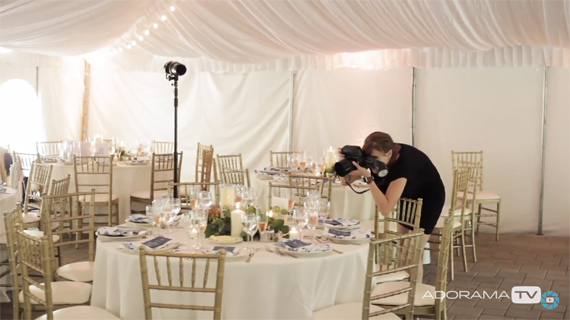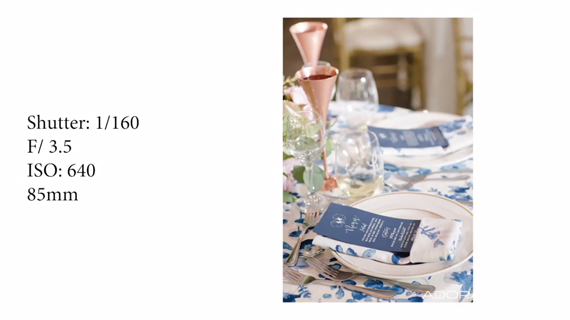In many weddings, the bride (and team) often spend hours and hours of planning out the details of everything from the place settings to the cake. As a wedding photographer, capturing these details is essential, but often there’s not a lot of time for taking shots. In the video below, wedding photographer Vanessa Joy from Adorama demonstrates how she captures stellar shots of all the little details with a setup that takes next to no time at all:
For her wedding reception photography, Vanessa Joy favors using a single Profoto A1 or B1 for an off-camera flash set at a 45-degree angle. Most of the time this is enough, and she can move quickly throughout the space. When it’s not, she’ll add in another light and/or mix in the on-camera flash (bounced off the ceiling and/or walls in this case).
Her exposure settings might raise an eyebrow for a beginning photographer—why the (relatively) high ISO in such a brightly lit space? The answer lies in the fact that she’s emphasizing the ambient light over the flash. The high ISO does better at weighting the end result more toward the ambient light than the flash. It’s one of the instances where a higher ISO may be preferable over a lower one, and let’s face it, with today’s DSLRs it’s pretty easy to shoot with higher ISOs and keep the noise down, both in-camera and in post-processing.
So why the flash then? The flash allows her to keep her images sharp with shutter speeds under 1/160 second, and when she bounces the on-camera flash off the walls, she gets a soft, glowing fill light.
One thing of note, though. The Profoto series is fairly expensive. Pros swear by them, especially in their consistency of color temperature. But if you don’t have the budget to dive in that deeply, you could probably get similar results with simple TTL speedlights.
In the end, the more beauty you can capture for the bride and groom, the higher the quality of the service you’re rendering. And while your first aim should be to please your clients, it doesn’t hurt to get published in high quality magazines and blogs, too.
Like This Article?
Don't Miss The Next One!
Join over 100,000 photographers of all experience levels who receive our free photography tips and articles to stay current:








Leave a Reply